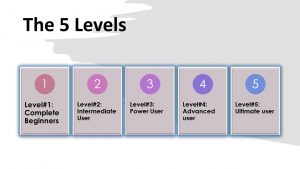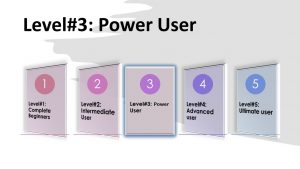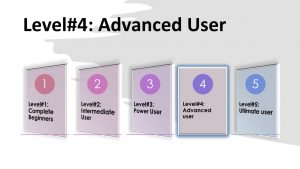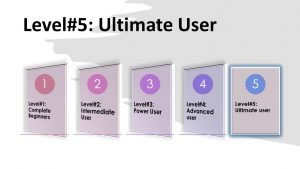This article is for those of you who are trying to find the best Linux distro to learn Linux. Let’ go ahead and explore what are the choices we have and analyze their differences in an attempt to choose the best Linux Distro for Learning Linux.
Let’s start by looking at the short version of the answer for those of you in a hurry to start learning Linux!
The Short Version Of The Answer
Level#1: Complete Beginners- Ubuntu and derivatives
Level#2: Intermediate User- Fedora
Level#3: Power User- Arch
Level#4: Advanced user- Gentoo
Level#5: Ultimate user- Linux From Scratch
That is just the short version of the answer, let’s go ahead and look at the longer and more informative version and learn why we have these levels and what were the factors considered to choose a given distro to be the best for a given level!
The 5 Levels
The simple answer to the question
What is the best distro for learning Linux?
is it depends on the level you are at! So I have divided the Linux distros into the following 5 levels
- Complete Beginners: You have used windows or Mac for years and you have never done any programming nor have you used terminal or command line.
- Intermediate User: You
have
some
experience using Linux and you can do some basic command line activities following some information on the web
- Power Users: You have used Linux for a couple of years as your main operating system and you are looking for a more challenging distro
- Advanced users: You can customize your distro to do anything you want, now you wish to make the distro optimized to your own hardware
- Ultimate users: You can
compile
everything from the source code and build your own system!
The descriptions above give a brief intro into the idea behind these levels. Based on that you should be able to figure out which level you are at. You can start your journey from that particular level!
The next sections describe each of these levels in more detail and give you good distros to use on those levels along with tips on when and how to progress from one level to the next!
Level#1: Complete Beginners
If you know how to use a computer and have never used Linux but you wish to learn Linux, then you belong to this Level! For a complete beginner, I would recommend starting with some easy to install distros like Solus, Ubuntu or one of its flavors (like Kubuntu and Xubuntu) or derivatives like Linux Mint. These are the popularly suggested “beginner distros” since almost everything can be done through using graphical tools and software and you can skip using the terminal for most basic tasks!
Out of these beginner distros, Ubuntu offers huge online community support, and hence I would propose going with Ubuntu as your first distro.
When to move away from a beginner distro?
Once you reach the level where you can use Linux as your main and only operating system to do all your basic tasks, then you have reached the level 2 and hence its time to start using a more challenging distro.
Level#2: Intermediate User
Okay so once you have learned everything you can about beginner distros and you are ready to move on to the next level, the type of distros you should hop to must be the original ones like Debian, Fedora, Slackware, and OpenSUSE. (stay away from Arch Linux and Gentoo until you are familiar with all the above distros as its too big a step from the beginner distros!)
Each of these distros is different and they have their own characteristics and these are the distros that will teach you tons about the Linux world! All of these distros are still easy to use once you learn the basics and you can exercise a very good level of customization with these distros.
Also, these distros don’t differ by look much as you can install your favourite Desktop Environment on any of these, but internally they differ a lot, for example, factors like the default package management system, design philosophies, init systems, communities, and values, etc are so different in each of these distros. So you will get to know the pros and cons of each design philosophy as you experiment with these distros and you will mature as a Linux user.
Out of these intermediate distros, I propose going for Fedora as Fedora is from the RedHat family, it is used as a testing ground by RedHat to test their latest features before releasing them in their RHEL enterprise edition. Hence Fedora is the most popular distro in terms of support for the latest advancements in the field of Linux. It also has a big user base, only second to Ubuntu.
When to move away from an intermediate distro?
When you have reached a level where you are familiar with the command line and you are able to install/remove packages, write text documents, navigate your file systems all on the command line, you are have reached a Power user level and you are ready to move on to the next level!
Level#3: Power User
Alright now that you have reached a power user level, the time has come to switch to a next level distro. Here you will be learning to put together your operating system by selecting each and every component that goes into the preparation and learn a lot more about the different parts of a distro.
A good analogy is these distros will give you the clay and you have to make your own sculptures with those!
Arch Linux is the distro I am going to recommend to you for this level!
When to move away from a Power user distro?
You can
- Build a working Arch system
- Solve common issues using the distro’s documentation rather than going to forums
- Customize arch as much as you can to match your requirements and preferences
- You have been using Arch as your main operating system for a long period of time (say 3 to 6 months)
Once you can do everything listed on the list above you are ready to move on to the Advanced User level!
Level#4: Advanced user
Alright, you have mastered Arch Linux, so what’s next? In this level, you are going to go one level more by compiling all the packages straight from the source code so that they are optimized to run on your hardware!
The distro you are going to use in this level is Gentoo Linux!
When to move away from an Advanced distro?
Once you can
- Take any opensource code available on the web, compile them, build them and install them on your machine
- You can build a complete working Gentoo system
- You have been using a Gentoo system for a considerable amount of time!
Level#5: Ultimate user
Alright, now you have reached the ultimate user level! Congratulations if you have made thus far! Not many do!
There is only one thing left to do now, Build your own Linux Distro! Yup, you have heard me right! For an Ultimate User like you, this is not going to be hard!
At this point, I suggest you give LFS distro a look. LFS stands for Linux From Scratch. Although it is technically not a distro, this distro is more like a DIY kit with instructions to make your very own distro and you can make it exactly the way you want it to be! LFS has been the inspiration behind many Linux distros!
Once you have done that, I guess you have mastered Linux!
And with that, I will conclude this article!
I hope you guys enjoyed this article and learned something useful.
If you liked the post, feel free to share this post with your friends and colleagues!
Related Articles
Here are some of my other articles that might interest you!
A Step By Step Plan To Learn Linux..!
Best Linux Distro For Workstation: Analysis and Comparison!!
A Complete Guide For Choosing A Distro For Your Computer’s Specs..!!
Best Distro For Software And Hardware Support: An Analysis.!!
Distro-Hopping, What, Why & How Explained!
Reasons Behind The Existence of SO MANY Linux Distros: An Analysis!







